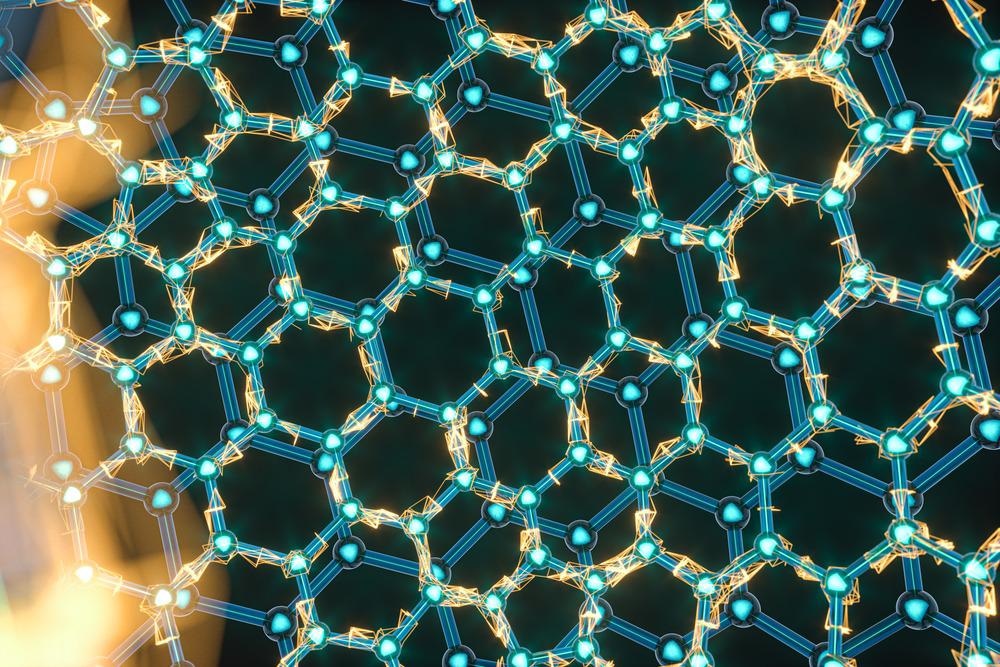Optical spectroscopy has helped scientists explore several new areas of nanocomposite research. In this article, the role of optical spectroscopy in polymer research is discussed.

Image Credit: Vink Fan/Shutterstock.com
Optical spectroscopy is any type of interaction between matter and optical photons. Generally, these interactions are classified as emission and absorption. In both of these types, the aim is to measure light spectra. However, the interpretation of the results, application range, and measurement arrangement may differ significantly due to their specific characteristics.
Optical Spectroscopy in Polymer Research
Optical spectroscopy has always been an important tool in research for revealing and studying the properties of materials by observing and analyzing the interaction between electromagnetic radiations and matter. Optical spectroscopy is an analytical tool used in various research fields like nanotechnology, the chemical industry, and the semiconductor industry.
The energy and nature of the excited states of conjugated polymers can also be determined via optical spectroscopy.
Optical spectroscopy can be used to explore several phenomena or properties of polymers. Through spectroscopy, the effects of desolvation and chain collapse on the photophysics of conjugated polymers can be studied.
Sensitive Optical Molecular Sensors
In recent studies, through optical spectroscopy, scientists used the coupling between the chain conformation as well as the photophysical properties of these chains to make sensitive optical molecular sensors. These sensors help illuminate the trails of protein self-assembly, detect the small number of nucleic acid polymers, and reveal the presence of enzymatic proteolysis.
More recent studies have also observed sub-piconewton forces in macromolecular chains by creating ultrasensitive molecular tension sensors.
Single-Molecule Luminescence Spectroscopy
Single-molecule luminescence spectroscopy has been proven to be a valuable tool to interpret the photophysics of semiconducting polymers. To study single semiconducting chain is first immobilized and then separated from its neighboring chains. This is achieved by embedding sample polymer of low concentration in the transparent solid matrix and nonfluorescent, for instance, in Zeonex, polystyrene or PMMA.
To prepare the sample, spin coating is used. A similar solvent for the matrix and the semiconducting polymer is evaporated, which helps in trapping the conjugated chains in a glassy matrix. This increased interaction between two macromolecular species, desolvation of chains, and removal of good solvent forms different nonequilibrium collapsed conformations that are characterized by intermittent photodynamics, intermolecular charge transfer, π stacked aggregates formation, and heterogeneous population.
The photophysics of the chains displays a strong sensitivity to the choice of matrix and the annealing and processing conditions, which is further evidence of the nonequilibrium state of polymers.
Research Applications
The luminescent properties in the thermodynamic and solvated states of semiconducting polymers were not explored previously. A study published in 2019 by the American Chemical Society was able to work on these properties of semiconducting polymers using optical spectroscopy. In their study, the scientists demonstrated a method that enabled the chemistry-free interrogation and immobilization of discrete conjugate macromolecules. This technique, unlike conventional immobilization techniques, keeps equilibrated conformation.
The team demonstrated a method to investigate single chains' photodynamics and assessed their time-resolved fluorescence by recording their total luminescence spectra; the effects of desolvation and chain collapse on the photophysics of conjugated polymers were also observed.
Instruments Used in Optical Spectroscopy
Commercially, these instruments are widely available by multiple suppliers. One of the suppliers of optical spectroscopic instruments is Ossila. The Ossila optical spectrometer provides affordable, reliable and fast spectrometers with high precision optics, enabling researchers to perform various optical spectroscopic experiments
Evaluating Optical Spectroscopy Techniques
Optical spectroscopy is a general method of investigating matter using electromagnetic radiations. The techniques used in optical spectroscopy are characterized by the type of material studied, the nature of the interaction, or the wavelength region used. These techniques include UV/Vis spectroscopy and Raman spectroscopy.
Each technique has its advantages and disadvantages. For example, UV/Vis is more advantageous than Raman spectroscopy in identifying certain amino acid sidechains and peptide bonds. Similarly, while investigating the inelastic scattering of photons, Raman spectroscopy is preferred over other spectroscopy techniques since it provides similar yet complementary data compared to others.
Spectroscopy techniques are useful methods to obtain structural and related property information through spectral data collection. However, spectrophotometry is more advantageous when a more quantitative approach is required. In spectrophotometry, spectral information is used to quantify components in the substance under analysis.
Conclusion
Optical spectroscopy is a very powerful tool for the spectroscopy of polymers. It provides means to interpret the photophysics of semiconducting polymers. Scientists employed optical spectroscopy to construct sensitive optical molecular sensors by linking the conformation of the chains with their photophysical characteristics.
These sensors can indicate the presence of enzymatic proteolysis, detect minute amounts of nucleic acid polymers, and illuminate the trails of protein self-assembly. All these advantages of optical spectroscopy make it an essential technological tool that can assist in taking polymer research even further.
Continue reading: Polymer Nanocomposites in the Marine Industry
References and Further Reading
Barford, W., & Marcus, M. (2017). Perspective: Optical spectroscopy in π-conjugated polymers and how it can be used to determine multiscale polymer structures. The Journal of Chemical Physics, 146(13), 130902. https://aip.scitation.org/doi/10.1063/1.4979495
Kumar, V., Coluccelli, N., & Polli, D. (2018). Coherent optical spectroscopy/microscopy and applications. https://doi.org/10.1016/B978-0-12-849883-5.00005-X
Ossila. Optical Spectrometer | Low Price, USB, UV-Vis-NIR. [online] Available at: https://www.ossila.com/products/optical-spectrometer
Platypus Technologies. n.d. 5 Different Types of Spectroscopy. [online] Available at: https://www.platypustech.com/5-different-types-of-spectroscopy
Van De Laar, T., Hooiveld, E., Higler, R., Van Der Scheer, P., & Sprakel, J. (2019). Gel Trapping Enables Optical Spectroscopy of Single Solvated Conjugated Polymers in Equilibrium. ACS nano, 13(11), 13185-13195. https://pubs.acs.org/doi/10.1021/acsnano.9b06164
Disclaimer: The views expressed here are those of the author expressed in their private capacity and do not necessarily represent the views of AZoM.com Limited T/A AZoNetwork the owner and operator of this website. This disclaimer forms part of the Terms and conditions of use of this website.